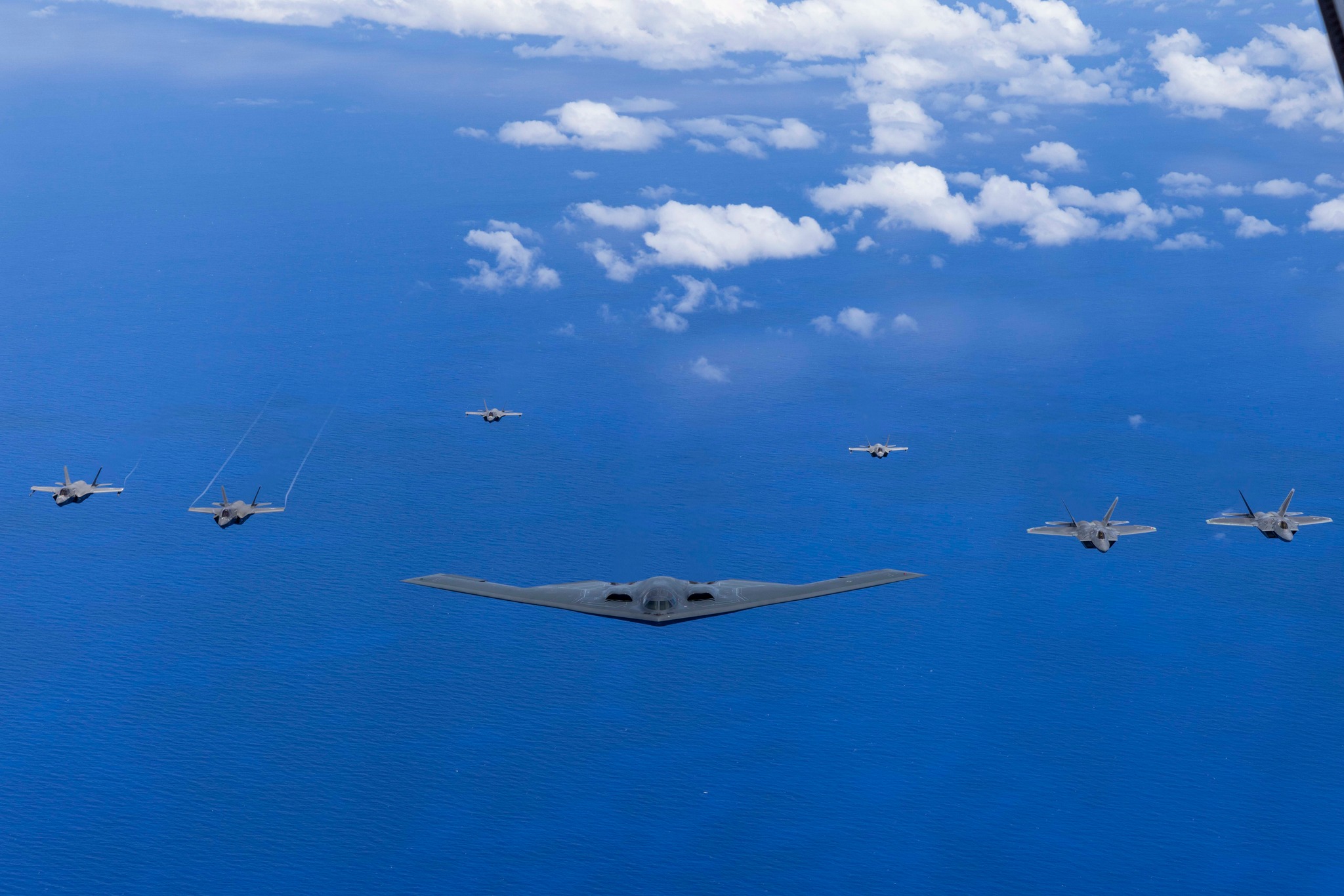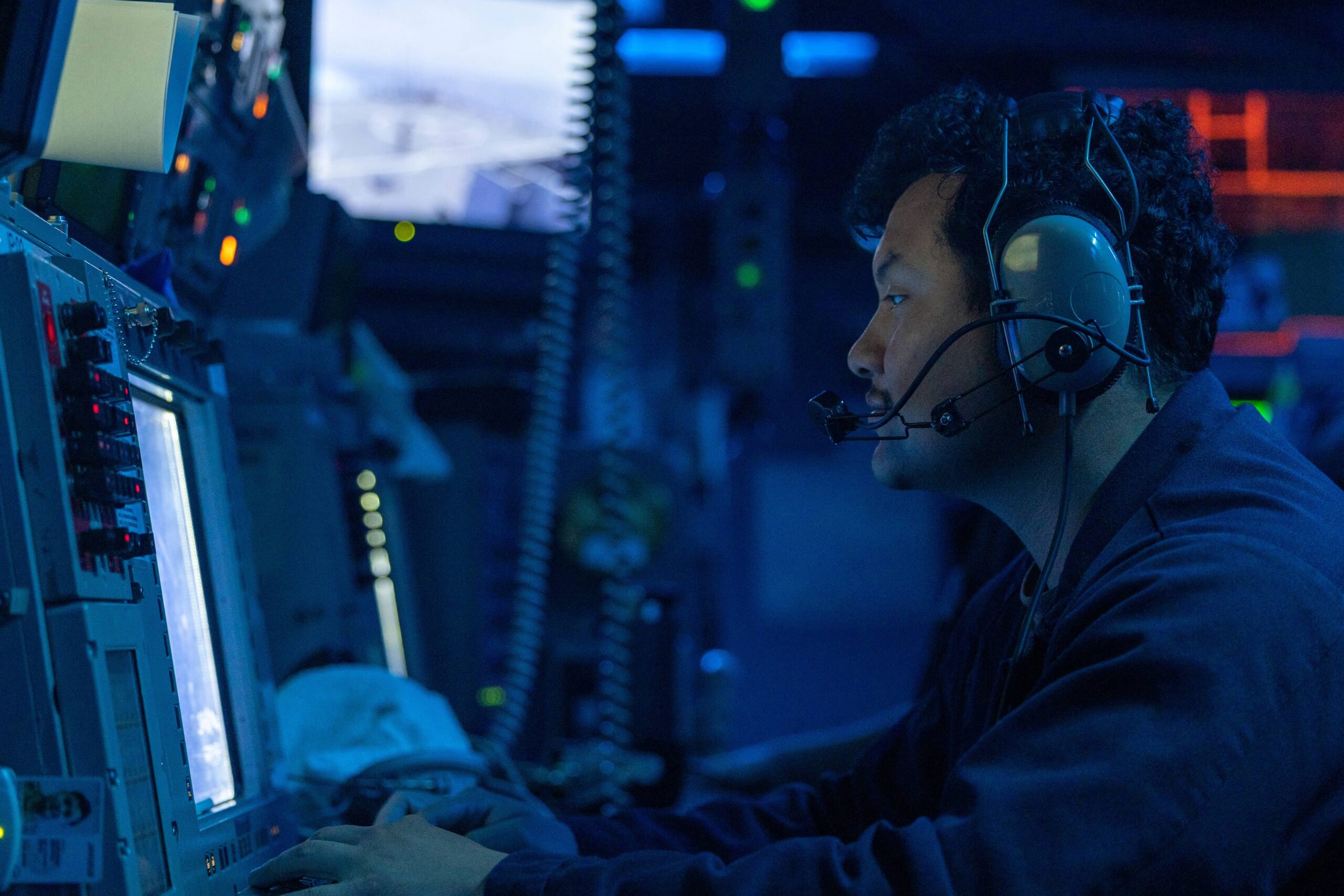US B-2 Spirit stealth bombers flew to the Pacific last week to participate in the large-scale joint exercise Valiant Shield 2024. The exercise took place around Guam, Palau, and the Northern Mariana Islands, with the B-2s landing on Guam for the first time in five years.
“Nuclear Showdown”: Stripped B-52 Bombers Could Get Nukes Again Amid Growing Russian Threats
These stealthy aircraft arrived at Andersen Air Force Base on June 13. Hailing from Whiteman Air Force Base in Missouri, the B-2 Spirits were seen participating in the exercise alongside F-22 Raptors and Marine Corps F-35Bs.
Images released by the Pacific Air Forces (PACAF) showed the stealthy bombers in action, including their landing at Andersen Air Force Base. Valiant Shield, which concluded on June 18, offered a platform for the US military to showcase its strategic capabilities.
The Marines emphasized the importance of the B-2 Spirit’s deployment, noting its critical role in demonstrating speed, flexibility, and readiness.
“The speed, flexibility, and readiness of our strategic bombers play a critical role in our ability to deter potential adversaries and signal our unwavering support to our allies and partners,” the service said.

The Air Force highlighted the significance of counter-maritime missions during the exercise. “Counter-maritime missions provide valuable training opportunities to improve our interoperability and demonstrate that our forces are capable of operating anywhere, anytime, to meet any challenge decisively,” added the service.
However, Pacific Air Forces and Whiteman Air Force Base have not given out details regarding the missions or training activities in which the B-2s participated during the exercise.
The B-2 bombers have been active globally. In 2023, the bombers conducted multiple missions over Europe, while in 2022, crews were dispatched to Australia as part of a Bomber Task Force deployment.
However, the bomber has not been stationed in Guam in the past five years. The last recorded instance of a B-2 landing in Guam was in 2019 during a refueling stop as part of a Bomber Task Force mission.
The deployment to Guam emphasizes the strategic role the island plays in US military operations in the Pacific. Given the increasing focus on potential threats from China, the presence of B-2 bombers in the region serves as a powerful reminder of the US commitment to safeguard its interests in the area.
Valiant Shield 24
Valiant Shield is a biennial military exercise known for its scope and scale. This year, for the first time, all six US military services and international partners participated in the exercise.
The exercise started on June 7 with a spectacular formation flight involving B-1 Lancer bombers and F-22 Raptors over US Navy and Japan Maritime Self-Defense Force ships. This display of air power marked the beginning of intensive joint training scenarios aimed at enhancing interoperability and readiness among allied forces.
The exercise, which concluded recently, featured a series of dynamic training scenarios aimed at enhancing joint force capabilities across multiple domains.
According to a statement from the US Navy, participants in Valiant Shield 2024 engaged in various activities designed to simulate real-world operations.
These included a sinking exercise on a decommissioned amphibious transport dock, the launch of high-altitude balloons from Andersen Air Force Base, and nighttime flying operations. The overarching goal was to enhance proficiency in detecting, locating, tracking, and engaging units across sea, air, space, land, and cyberspace domains.

“Exercises such as VS24 provide a critical opportunity for forces across the Indo-Pacific region to integrate and train together,” explained the US Navy. “This year’s exercise demonstrated precise, lethal, and overwhelming multi-domain effects, showcasing the strength and versatility of the Joint and Combined Force.”
The involvement of US Space Command and US Transportation Command further underscored the exercise’s emphasis on multi-domain collaboration among Combatant Commands. This integration was essential for conducting large-scale operations effectively.
The US Air Force played a pivotal role in the exercise and deployed a diverse array of assets. Alongside the B-2 Spirit stealth bombers from Whiteman Air Force Base, Missouri, the Air Force contributed F-22 Raptors from Joint Base Langley–Eustis, Virginia, and Elmendorf Air Force Base, Alaska.
Additionally, F-16 Fighting Falcons from Misawa Air Base, Japan, C-17 Globemaster IIIs from Joint Base McGuire-Dix-Lakehurst, New Jersey, and C-130J Super Hercules from Dyess Air Force Base, Texas, were actively involved.
Particularly noteworthy was the endurance feat of the C-130Js, which undertook maximum endurance operations to reach the Pacific. Echoing a previous epic flight in April, two C-130Js equipped with conformal fuel tanks flew for 22 hours from Texas to Guam, with a brief stop in California, while others made additional strategic stops along the way.
- Contact the author at ashishmichel(at)gmail.com




